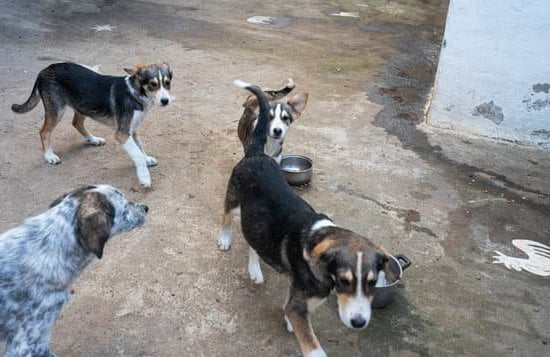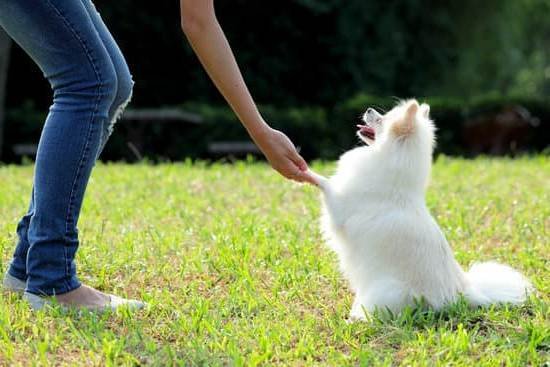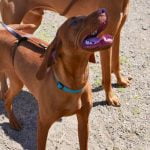Training a dog to pee and poop on a pad can be a convenient and practical solution for pet owners who live in apartments or have busy schedules. In this article, we will explore the importance of teaching your dog to use potty pads, as well as provide valuable insights and step-by-step guidance on how to effectively train your furry friend.
Potty training is an essential aspect of owning and caring for a dog. By teaching your pet to use potty pads, you can avoid accidents indoors, maintain a clean living environment, and provide them with a designated area for their bathroom needs. Understanding your dog’s natural instincts and behavior is crucial in successfully training them to use a pad, and we will delve into these factors to help you better connect with your canine companion.
Setting up the perfect potty training area with pads is the first step towards successful training. We will discuss the ideal location for placing pads, as well as tips for choosing the right type of pads for your dog. Additionally, our step-by-step guides will outline effective techniques for teaching your dog to both pee and poop on the pad, addressing common potty training problems along the way.
Overall, this comprehensive guide aims to provide you with all the necessary information and strategies for successfully training your dog to use potty pads. With patience, consistency, and positive reinforcement, you can celebrate your pet’s success in mastering this important skill.
Understanding Your Dog’s Natural Instincts and Behavior
When it comes to training your dog to pee and poop on a pad, it’s important to understand their natural instincts and behavior. Dogs are instinctively den animals, meaning they prefer to eliminate in a safe and confined space. This is an important aspect to consider when potty training your dog, as it will make the process much easier for both you and your furry friend.
To successfully train your dog to use a pad for peeing and pooping, you need to understand their body language and signals. Most dogs will exhibit certain behaviors when they need to go, such as circling, sniffing the ground, or suddenly becoming restless. By paying attention to these cues, you can anticipate when your dog needs to use the pad and guide them accordingly.
It’s also important to recognize that accidents may happen during the training process. Instead of scolding your dog for making a mistake, remain patient and provide gentle guidance. Punishing or yelling at your dog can create anxiety and hinder the potty training progress. Consistency, positive reinforcement, and understanding your dog’s natural instincts are key elements in successfully teaching them how to pee and poop on a pad.
- Observe your dog’s behavior closely.
- Recognize their signals for needing to go.
- Be patient and understanding during the training process.
Setting Up the Perfect Potty Training Area With Pads
Setting up the perfect potty training area for your dog is crucial in teaching them to pee and poop on a pad. By creating a designated space for them to do their business, you are establishing a clear routine and boundary for your pet. Here are some steps to ensure that you set up the perfect potty training area with pads:
- Choose the right location: Selecting the right spot in your home for the potty training area is essential. It should be an easily accessible and quiet area where your dog feels comfortable. Consider using a corner of a room or a secluded area in your home.
- Use the right type of pads: When setting up the potty training area, it’s important to choose the right type of pads for your dog. There are various options available, including disposable pads and washable pads. Choose one that best suits your dog’s needs and your preferences.
- Create a consistent layout: Once you have chosen the location and the type of pads, create a consistent layout in the potty training area. This will help to establish a routine for your dog and make it easier for them to understand where they should go to do their business.
By following these steps, you can create an ideal potty training area with pads that will facilitate the process of teaching your dog to pee and poop in the designated spot.
Additionally, it’s important to consider investing in some canine cleaning solutions such as enzymatic cleaners which can help eliminate any odor left behind by accidents while housebreaking them.
Step-by-Step Guide to Teaching Your Dog to Pee on the Pad
Introducing the Pad as a Peeing Area
The first step in teaching your dog to pee on a pad is to introduce the pad as the designated area for them to relieve themselves. Place the pad in an easily accessible and consistent location within your home, such as the bathroom or a designated corner of a room. Encourage your dog to explore and become familiar with the pad by using positive reinforcement, such as treats and praise, whenever they approach or sniff it.
Establishing a Routine
Consistency is key when training your dog to pee on a pad. Designate specific times throughout the day, such as after meals and before bedtime, to take your dog to the pad for potty breaks. Use verbal cues, such as “go potty” or “pee here,” to communicate with your dog and encourage them to urinate on the pad.
Reinforcing Good Behavior
When your dog successfully pees on the pad, immediately reward them with treats and plenty of praise. Positive reinforcement will help reinforce their understanding that peeing on the pad is desirable behavior. Avoid scolding or punishing your dog for accidents outside of the designated potty area, as this can create confusion and anxiety around potty training.
By following these steps and remaining patient and consistent, you can effectively train your dog to pee on a pad. Remember that every dog learns at their own pace, so be prepared for setbacks and continue offering encouragement and support throughout the training process. With time and dedication, your dog will develop a reliable routine for using their designated potty area.
Step-by-Step Guide to Teaching Your Dog to Poop on the Pad
When it comes to potty training your dog, teaching them to poop on a pad can be just as important as teaching them to pee on one. By providing a designated area for your dog to do their business, you can prevent accidents in the house and make cleanup much easier. Here’s a step-by-step guide to help you train your dog to poop on the pad.
Choose the Right Location
Start by selecting a specific location in your home where you want your dog to go potty. This area should be easily accessible for your dog, but also out of the way to avoid any unwanted odors or messes. Once you’ve chosen the spot, place the potty pad in that area and ensure that it’s secured in place.
Establish a Routine
Dogs thrive on routine, so it’s important to establish a consistent potty schedule. Take your dog to the designated potty area after they eat, drink, play, or wake up from a nap. By sticking to a regular routine, your dog will learn when and where they are expected to go potty.
Use Positive Reinforcement
When your dog successfully poops on the pad, be sure to offer plenty of praise and rewards. Positive reinforcement will help reinforce the behavior and encourage your dog to continue using the pad for their bathroom needs. Avoid punishing or scolding your dog for accidents, as this can create fear and anxiety around potty training.
By following these steps and being patient with your furry friend, you can effectively train them to poop on the pad. Remember that consistency is key when it comes to potty training, so stick with it and celebrate each successful attempt with lots of praise and treats.
Troubleshooting Common Potty Training Problems
Even with the best intentions and consistent training, there can be some common potty training problems that dog owners may encounter. Understanding these issues and knowing how to address them can help keep the training process on track.
One common problem is when a dog refuses to use the pee or poop pad. This could be due to several reasons such as the pads not being changed frequently enough, the location of the pads being unappealing to the dog, or a strong preference for going outside.
To address this issue, it’s important to ensure that the pads are changed regularly, placed in an easily accessible area for your dog, and use positive reinforcement when your dog uses the pad correctly.
Another issue is when a dog has accidents outside of the designated potty area. This may occur because the dog is confused about where they should go, they were not properly supervised, or they have not yet associated the pads with their bathroom spot.
To tackle this problem, it’s crucial to supervise your dog at all times during potty training, take them back to the pad if they start to have an accident elsewhere, and continue with consistent positive reinforcement when they use the pad.
Lastly, some dogs may develop a preference for a particular type of surface (such as carpet) over using their designated pee or poop pad. In this case, it’s essential to clean any accident spots thoroughly with an enzymatic cleaner to remove any lingering odors that may attract your dog back to those areas. Additionally, you can try different types of pads with different textures to see if your dog has a preference for a specific material.
Overall, troubleshooting potty training problems requires patience and persistence. With consistent training methods and positive reinforcement techniques, most issues can be resolved successfully.
| Common Potty Training Problems | Troubleshooting Techniques |
|---|---|
| Refusal to use pee or poop pad | Regularly change pads; Place them in an accessible area; Use positive reinforcement |
| Accidents outside designated area | Supervise at all times; Take them back to pad; Consistent positive reinforcement |
| Preference for certain surface over pad | Clean accidents thoroughly; Try different types of pads with various textures |
Tips for Creating a Consistent Potty Training Routine
Training your dog to pee and poop on a pad requires consistency and a solid routine. Dogs thrive on routine, so establishing a consistent potty training schedule is crucial for success. Here are some tips to help you create and maintain a consistent potty training routine for your furry friend.
First, establish a regular feeding schedule for your dog. This will help regulate their digestive system and make it easier to predict when they will need to go potty. Take your dog outside or to the designated potty area shortly after each meal, as well as first thing in the morning and last thing at night.
Another important tip is to take your dog out for potty breaks at regular intervals throughout the day. This could be every 2-3 hours, depending on your dog’s age and breed. Consistently taking them out at these intervals will help prevent accidents inside the house and reinforce good potty habits.
In addition to regular potty breaks, be sure to provide plenty of positive reinforcement when your dog successfully pees or poops on the pad. Praise them enthusiastically, offer treats, and give them physical affection. This positive association will encourage them to continue using the pad for their business.
By establishing a consistent routine, sticking to a feeding schedule, taking regular potty breaks, and providing positive reinforcement, you can effectively train your dog to pee and poop on the pad. Remember that patience is key, as every dog learns at their own pace. With time and dedication, you’ll have a fully trained pup who knows exactly where to go when nature calls.
Reinforcing Good Behavior and Positive Reinforcement Techniques
Training your dog to pee and poop on a pad is a process that requires patience, consistency, and positive reinforcement. Once your dog has started to show progress in using the pads for potty time, it’s important to reinforce this behavior to ensure that it becomes a consistent habit. In this section, we’ll discuss some effective positive reinforcement techniques and how to reinforce good behavior during the potty training process.
One of the most important aspects of reinforcing good behavior during potty training is to use positive reinforcement whenever your dog successfully uses the pad. This can be done by showering them with praise, treats, or whatever else motivates your canine companion. When your dog associates using the pad with positive outcomes, they are more likely to continue doing so in the future.
Consistency is key when it comes to reinforcing good behavior. Make sure that every time your dog uses the pad for peeing or pooping, they receive immediate positive reinforcement. This will help them understand what is expected of them and encourage them to repeat this behavior in the future. Additionally, make sure that everyone in the household is on the same page and uses consistent reinforcement techniques to avoid confusing your furry friend.
Another effective technique for reinforcing good behavior during potty training is using a marker word or clicker to signal to your dog that they have done something right. Pairing this with a treat or praise will further solidify their understanding of what is expected of them. Remember to be patient and consistent in using these techniques as you continue with the potty training process.
Overall, reinforcing good behavior through positive reinforcement techniques plays a crucial role in successfully training your dog to pee and poop on a pad. By consistently rewarding them for using the designated area for potty time, you can help establish this as a regular habit for your furry companion.
Conclusion
In conclusion, training your dog to pee and poop on a pad is a crucial aspect of responsible pet ownership. By understanding your dog’s natural instincts and behavior, setting up a suitable potty training area with pads, and following a step-by-step guide for teaching them to use the pad, you can successfully achieve this goal.
It is essential to remember that patience, consistency, and positive reinforcement are key to overcoming common potty training problems and creating a reliable routine.
As you celebrate your dog’s potty training success, it’s important to reinforce good behavior and continue using positive reinforcement techniques. Remember to praise and reward your dog each time they successfully use the pad, further encouraging them to consistently repeat this desired behavior. Additionally, maintaining the training involves being attentive to any changes in your dog’s habits or environment that may affect their potty routine.
Finally, for long-term success in maintaining the potty training of your dog, it is vital to establish a consistent routine surrounding their bathroom needs. Make sure to take them out at regular intervals for breaks, provide access to the designated potty area with pads when indoors, and be patient as they continue learning. With time and dedication, you will see progress in training your dog to pee and poop on pad while strengthening the bond between you both.
Frequently Asked Questions
How Do You Train a Dog to Pee and Poop on a Pee Pad?
Training a dog to pee and poop on a pee pad requires consistency and positive reinforcement. Start by placing the pad in the designated area and bring your dog there regularly, especially after meals or naps. When your dog successfully uses the pad, praise and reward them to reinforce the behavior.
How Do You Attract a Dog to Pee on a Pad?
To attract a dog to pee on a pad, you can use scent attractants specifically designed for this purpose. These products contain pheromones that encourage dogs to eliminate in the designated spot. Additionally, you can also place a used pad with urine scent to signal to your dog that it’s an appropriate area for elimination.
Why Won’t My Dog Poop on His Pee Pad?
If your dog won’t poop on his pee pad, it could be due to various reasons such as discomfort with the texture of the pad, lack of training, or anxiety about using it. It’s important to observe your dog’s behavior and address any issues that may be causing hesitation or refusal to use the pee pad.
Patience and positive reinforcement are crucial in overcoming this challenge.

Welcome to the blog! I am a professional dog trainer and have been working with dogs for many years. In this blog, I will be discussing various topics related to dog training, including tips, tricks, and advice. I hope you find this information helpful and informative. Thanks for reading!





